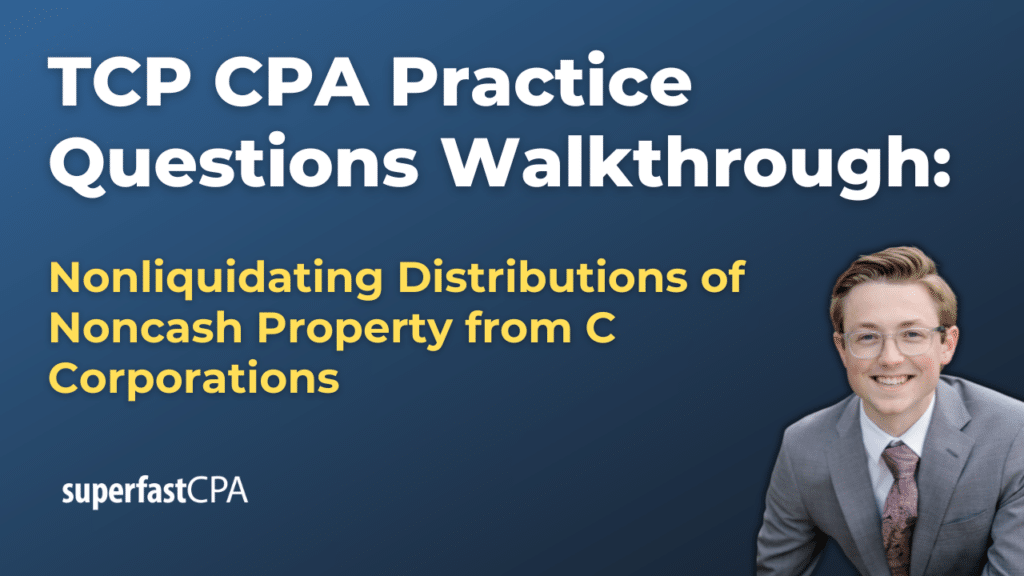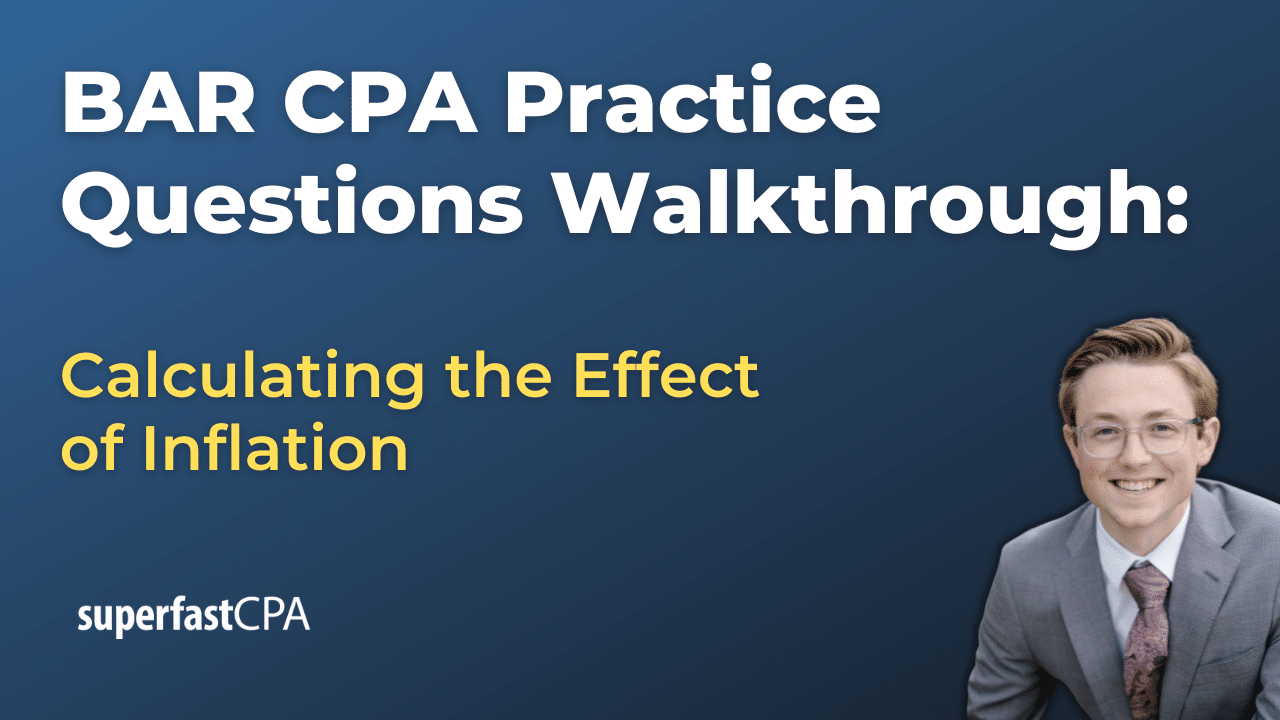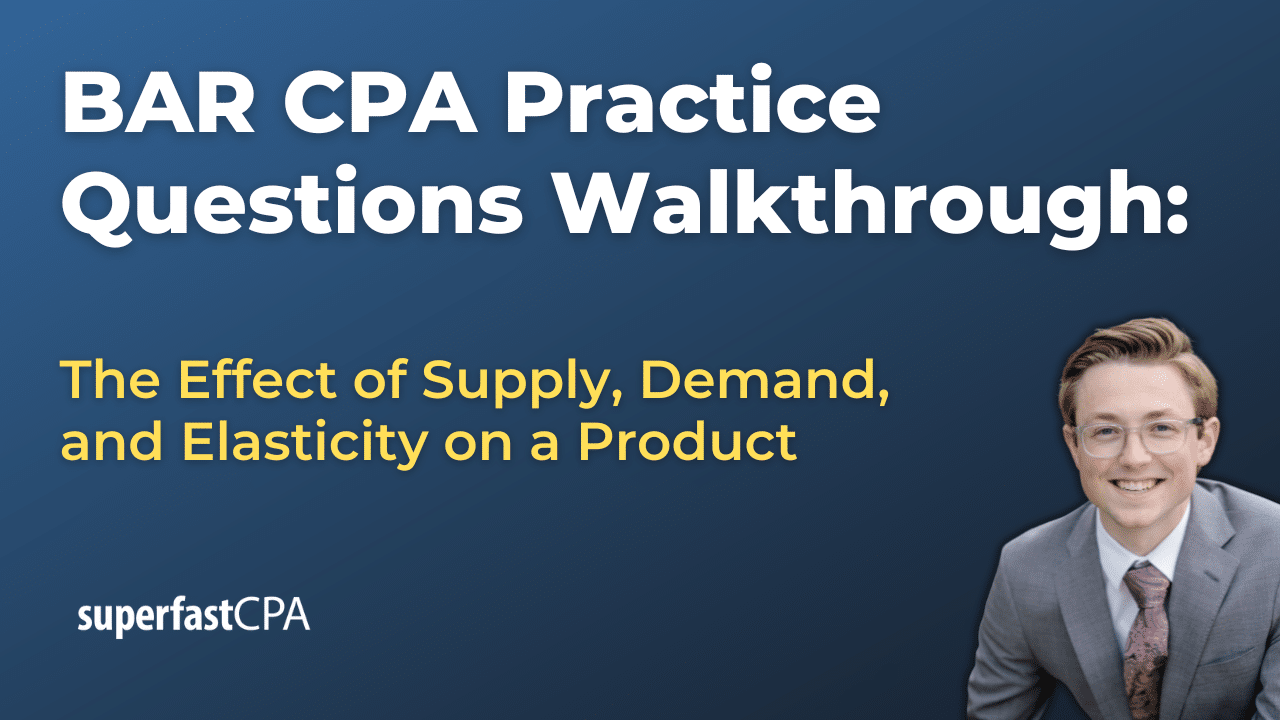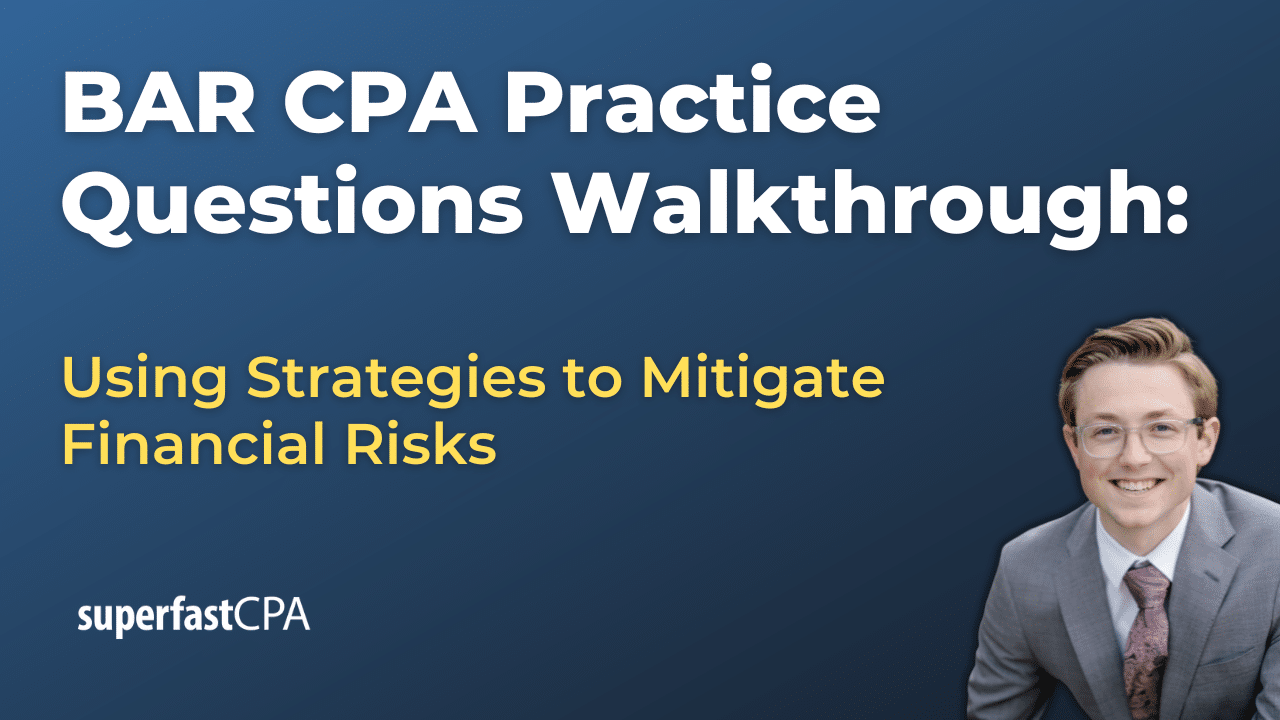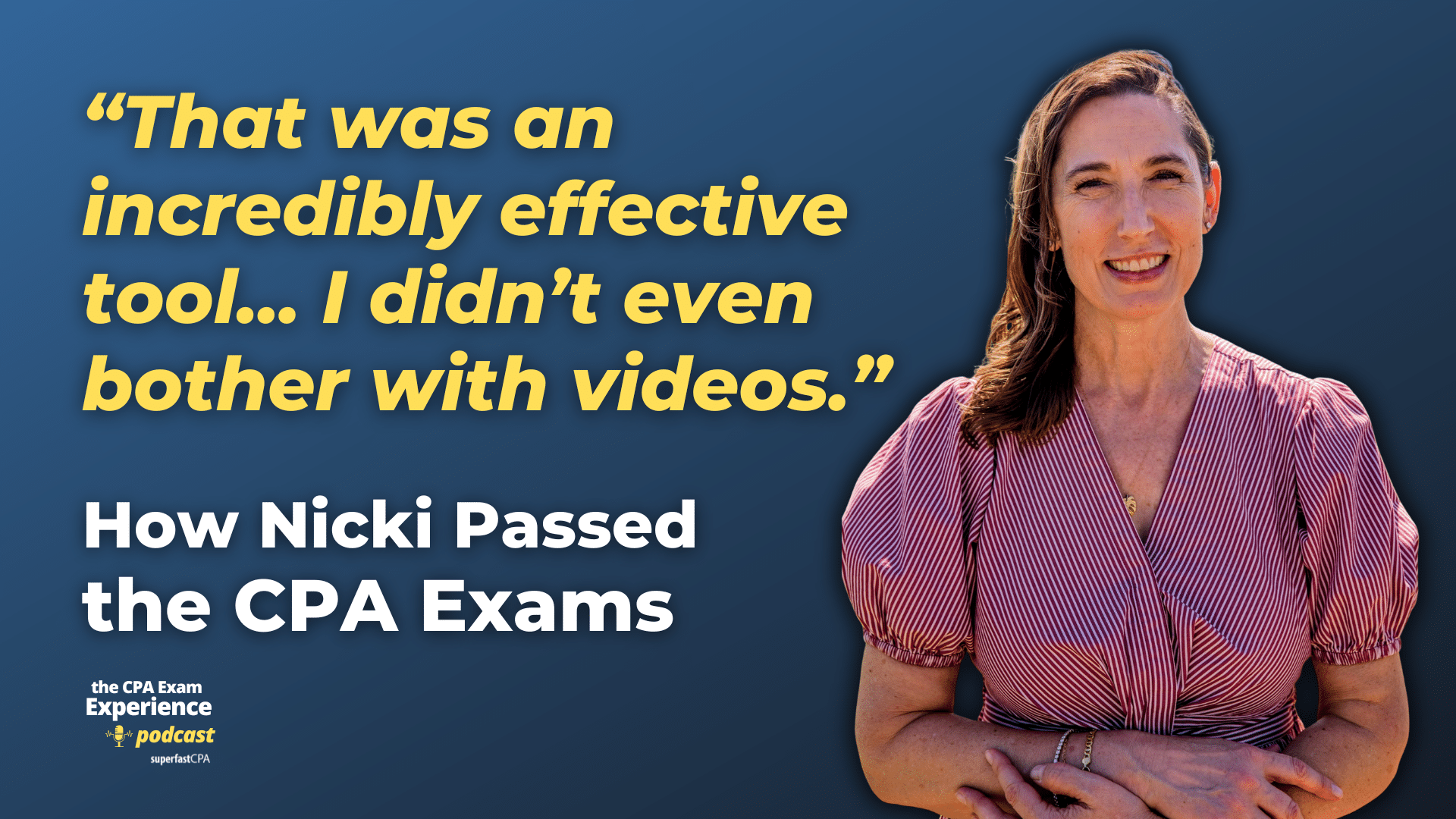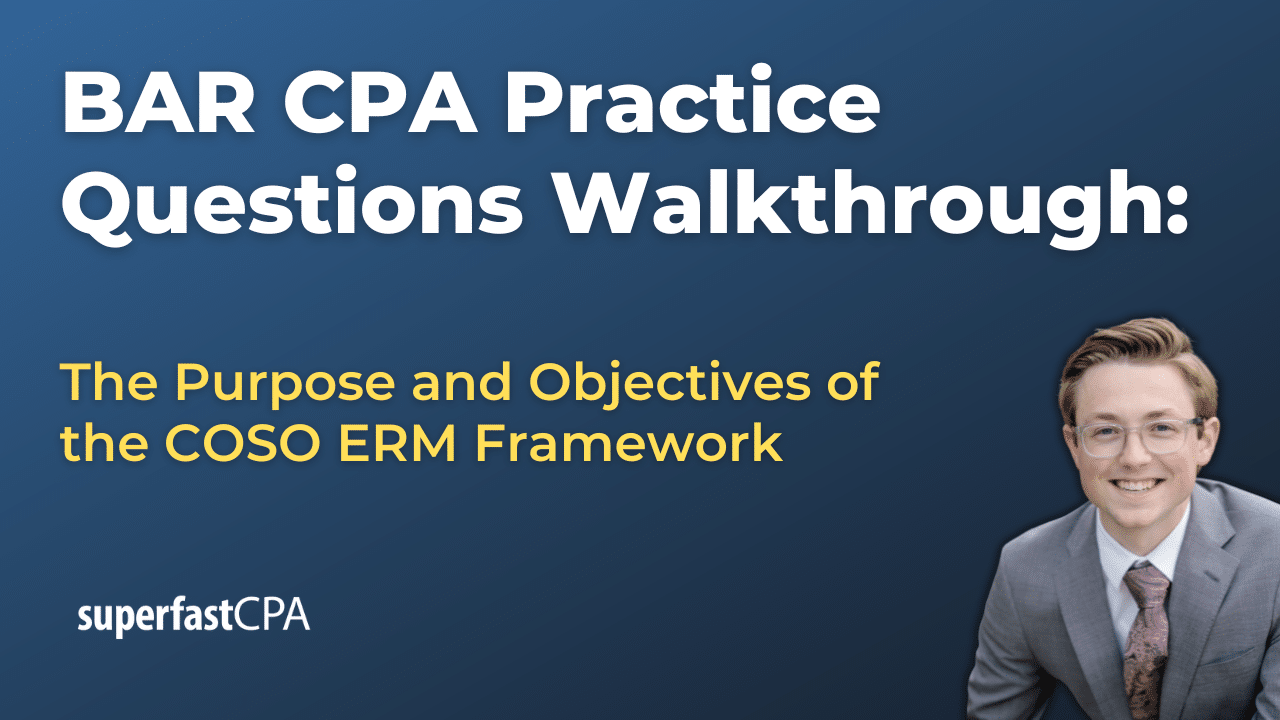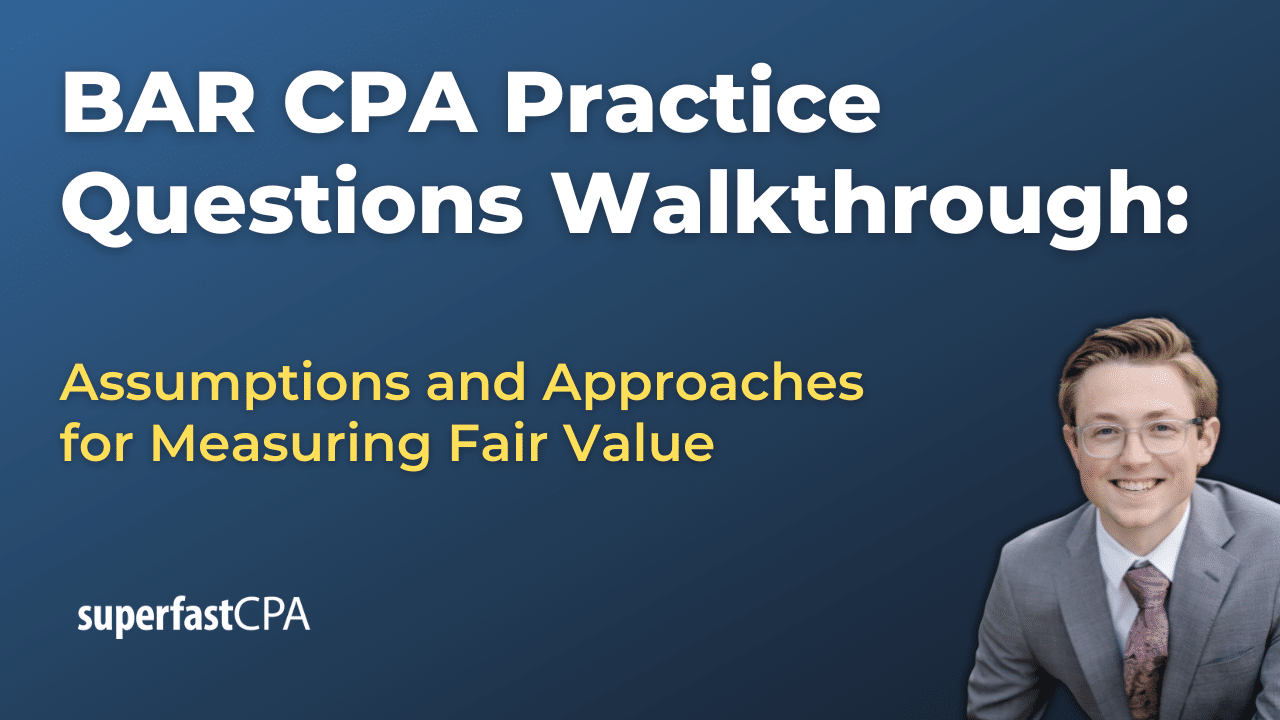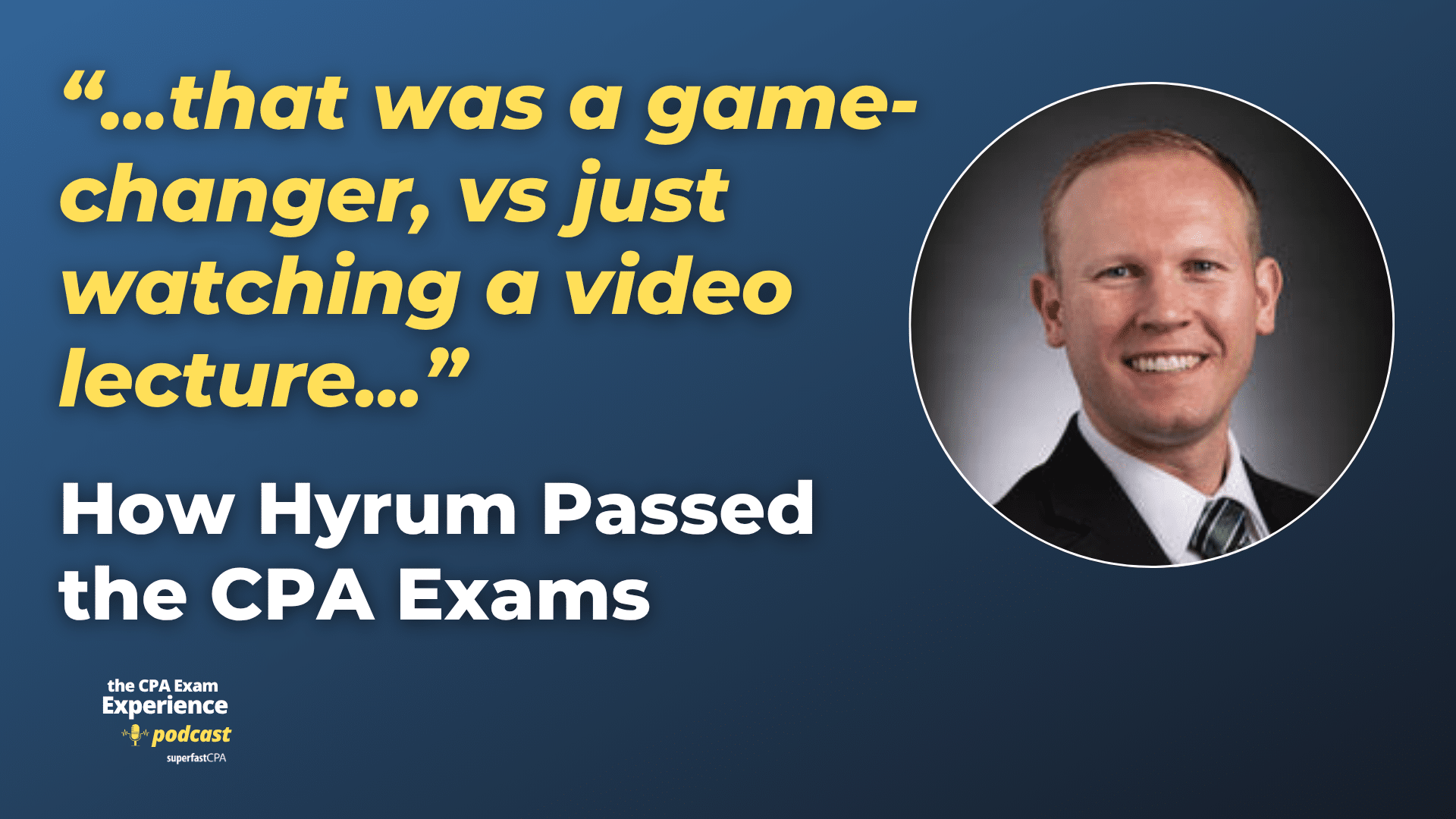In this video, we walk through 5 TCP practice questions teaching about the effects of nonliquidating distributions of noncash property from C corporations. These questions are from TCP content area 2 on the AICPA CPA exam blueprints: Entity Tax Compliance.
The best way to use this video is to pause each time we get to a new question in the video, and then make your own attempt at the question before watching us go through it.
Also be sure to watch one of our free webinars on the 6 “key ingredients” to an extremely effective & efficient CPA study process here…
Nonliquidating Distributions of Noncash Property from C Corporations
When a C corporation distributes noncash property to its shareholders, both the corporation and the shareholders must determine the tax implications. The process involves calculating the recognized gain for the corporation, the treatment of distributions to shareholders, and the shareholder’s basis in the property received. Let’s break down each component with examples to clarify the concepts.
1. Corporation’s Recognized Gain
A C corporation must recognize any realized gain from distributions of property. The recognized gain is computed as follows:
- Gain Calculation: The recognized gain is the greater of the fair market value (FMV) of the property or the liability assumed by the shareholder, minus the corporation’s adjusted basis in the property.
Example:
- Property Details: Corporation A distributes land with an FMV of $100,000 and an adjusted basis of $40,000. The shareholder assumes a liability of $70,000.
- Calculation: The recognized gain is the greater of FMV ($100,000) or liability ($70,000), less the corporation’s basis ($40,000). Therefore, the recognized gain is $100,000 – $40,000 = $60,000.
2. Shareholder’s Treatment of Distributions
Shareholders treat distributions in three stages: dividend income, return of capital, and capital gain. Here’s how each stage is determined:
- Dividend Income: Distributions up to the corporation’s current and accumulated earnings and profits (E&P) are treated as dividend income, which is taxable.
- Return of Capital: Distributions exceeding the total E&P are considered a nontaxable return of capital. This reduces the shareholder’s stock basis.
- Capital Gain: Any amount exceeding both the E&P and the shareholder’s stock basis is treated as a capital gain and is taxable.
Example:
- Corporation Details: Sunbeam Corp. has accumulated E&P of $150,000 and current E&P of $50,000. It distributes equipment with an FMV of $200,000 and an adjusted basis of $100,000 to Shareholder B. Shareholder B’s stock basis is $60,000.
- Calculation:
- Total E&P: $150,000 + $50,000 = $200,000.
- Dividend Income: The distribution up to the total E&P ($200,000) is considered dividend income. Thus, Shareholder B receives $200,000 as dividend income.
- Return of Capital: Since the distribution matches the E&P, there’s no return of capital.
- Capital Gain: There’s no capital gain because the distribution equals the total E&P.
3. Shareholder’s Basis in the Property Received
The shareholder’s basis in the property received is determined by the greater of the FMV or the liability assumed. Here’s the method to calculate it:
- Basis Calculation: The shareholder’s basis in the distributed property is the greater of the FMV of the property or the liability assumed by the shareholder. This basis is added to the shareholder’s holding period for determining gain or loss on future dispositions.
Example:
- Property Details: Corporation B distributes machinery with an FMV of $250,000 and an adjusted basis of $100,000. Shareholder C assumes a liability of $180,000. Shareholder C’s stock basis is $70,000.
- Calculation:
- FMV: $250,000.
- Liability Assumed: $180,000.
- Shareholder’s Basis: The greater of FMV ($250,000) or liability ($180,000) is $250,000. Thus, Shareholder C’s basis in the machinery is $250,000.
Summary and Key Points:
- Corporation’s Gain: Recognized as the greater of FMV or liability assumed, minus the corporation’s basis.
- Shareholder’s Dividends: Taxable up to the total E&P.
- Return of Capital: Excess over E&P reduces stock basis.
- Capital Gain: Excess over E&P and stock basis is a capital gain.
By following these guidelines, both corporations and shareholders can accurately determine the tax implications of nonliquidating distributions of noncash property. This understanding ensures compliance with tax laws and helps in planning for future distributions.

